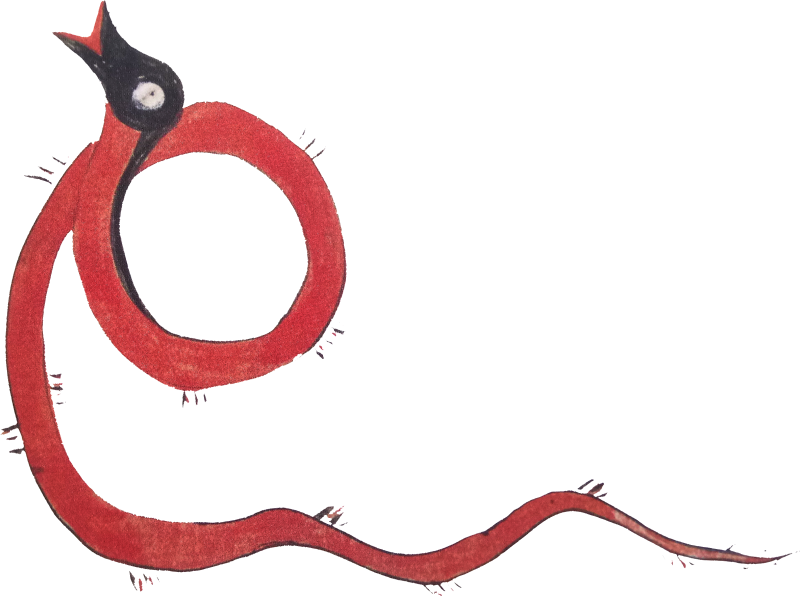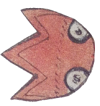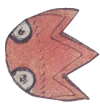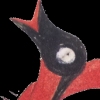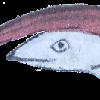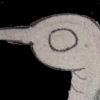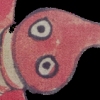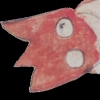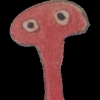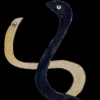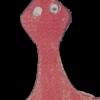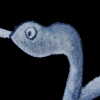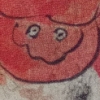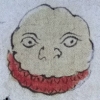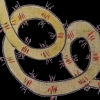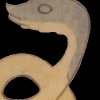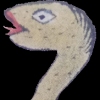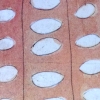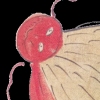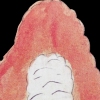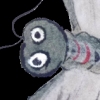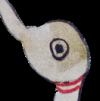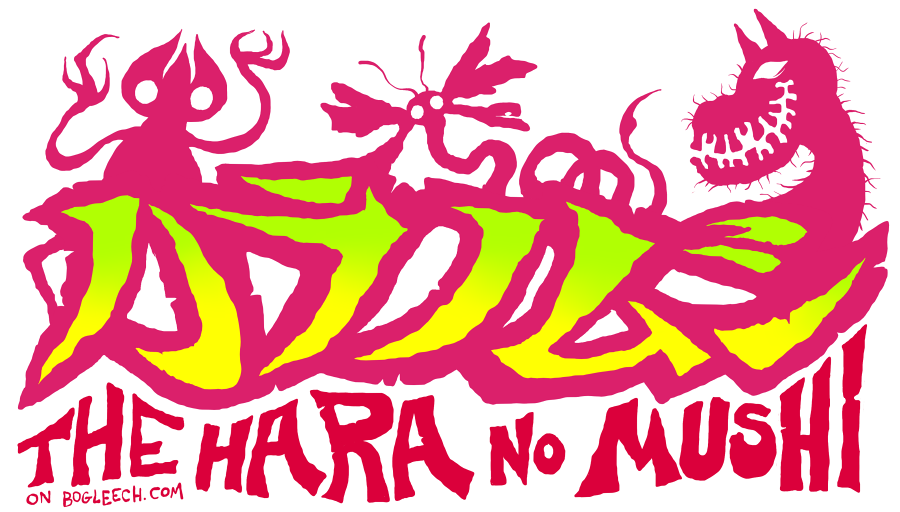
DAY FIVE: KAKURAN NO MUSHI
("Heat Stroke Bug")
Written by Jonathan Wojcik, Researched and Translated by Rev Storm
This is also the only hara no mushi to have a "case" included in its original description, which says that a man once found this bug peeking out of his own mouth. He grabbed hold of the bug and tried to pull it out, but he became woozy and near death as he did so, releasing the worm back into his stomach. He died shortly afterwards, and when his body was cut open, the worm was found with its tail wrapped so tight around his liver that it couldn't be removed.
Design Review:
This one may just be a worm, but it's a worm with so much personality. It's interesting that the little clumps of hair are supposed to be "legs," and I especially like that weird, bug-eyed baby-bird looking head that's supposed to look like it's regurgitating. That's just such an entertaining detail!TODAY'S REAL PARASITE:
Ancylostoma duodenale
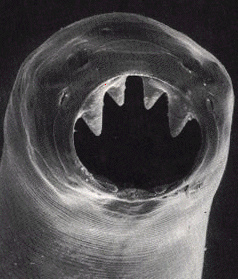
Hookworms are yet another group of parasitic nematoda, and though they don't have any eyes, they look more like they're laughing at a bad joke than feeling queasy and they certainly aren't large enough to grab in your bare hands, their symptoms are uncannily similar to the Kakuran no Mushi.
Like whipworm eggs, hookworm eggs can mostly be found in soil contaminated by human or animal feces, but these parasites cannot survive and hatch without two key things: moisture and heat. Cold weather kills them off completely, and so their infection rate is at its highest during the summertime or year-round in tropical climates and certain perpetually hot subterranean environments, such as mines.
Once they've hatched, hookworm larvae take a few days to molt into a Stage II Juvenile capable of drilling its way through the skin of its host, and most commonly enters through unprotected feet. Once inside, it takes another cue from whipworm and rides the bloodstream to the lungs before it gets hacked up and reingested into the stomach. Adults use their charmingly dopey vampire fangs to bite the intestinal wall and gorge on host blood, the most immediate symptoms of which are nausea, vomiting, and most notably a feeling of chronic fatigue, all of which are also associated with heat exhaustion. In fact, hookworm infestation is the likely true culprit behind the "sluggish and lazy" stereotype that long plagued people of warmer, Southern climates, especially poorer workers and slaves who couldn't afford or were not even permitted simple footwear.
You can see how the symptoms of Hookworm would have been difficult to separate from the effects of working too hard in weather far too hot, but that the infestation would have continued manifesting these symptoms even long after summer gave way to winter. The Harikikigaki's mention of this specific detail tells me that Heat Sickness Bug is almost certainly a manifestation of a hookworm problem, even if our mysterious author didn't necessarily realize that. Even if they had, however, the "bug" might not have really differed; it's not so much that these creatures are "misrepresentations" of real maladies, but that they're intentionally symbolic of them. That's just sort of what youkai are like - they're pretty much "mascots" of natural phenomenon.
